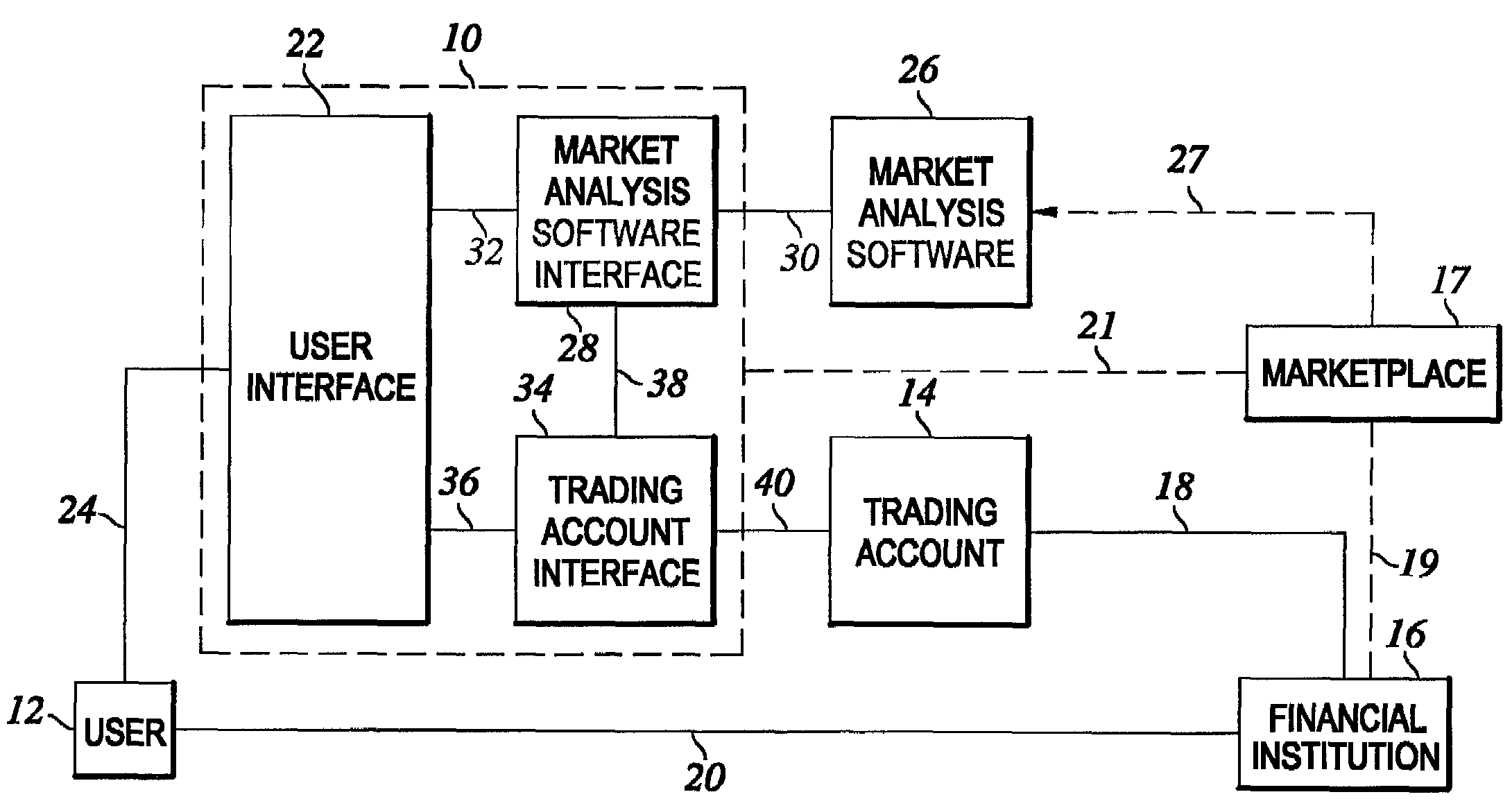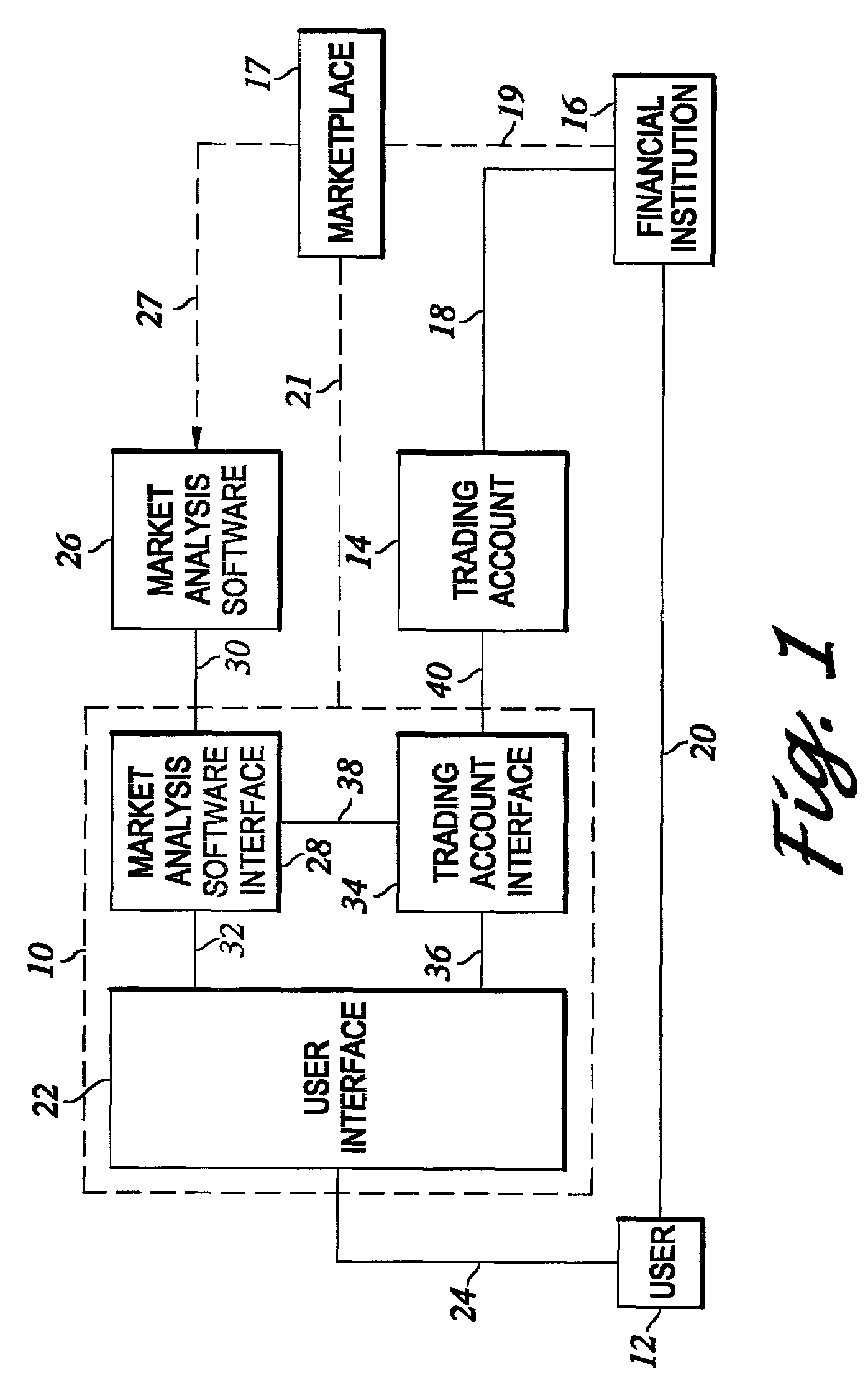Method and system for the automated trading of financial instruments
- Summary
- Abstract
- Description
- Claims
- Application Information
AI Technical Summary
Benefits of technology
Problems solved by technology
Method used
Image
Examples
Embodiment Construction
[0024]Referring now to the drawings wherein the showings are for purposes of illustrating a preferred embodiment of the present invention only, and not for purposes of limiting the same, FIG. 1 illustrates a preferred system for implementing the method and system 10 for automatically communicating financial instrument trade orders of the present invention.
[0025]In an embodiment of the present invention, there is provided an automated system 10 for communicating trade orders to a marketplace 17 for financial instruments through a trading account 14 with a financial institution 16, such as a brokerage house or any other entity providing access to financial instruments trading. In this regard, it is contemplated that a user 12 has established some relationship with the financial institution 16 to initially set-up the trading account 14. The trading account 14 allows trading orders to be communicated electronically (referred to herein as an “on-line” trading account 14). Thus, relationa...
PUM
 Login to View More
Login to View More Abstract
Description
Claims
Application Information
 Login to View More
Login to View More - R&D
- Intellectual Property
- Life Sciences
- Materials
- Tech Scout
- Unparalleled Data Quality
- Higher Quality Content
- 60% Fewer Hallucinations
Browse by: Latest US Patents, China's latest patents, Technical Efficacy Thesaurus, Application Domain, Technology Topic, Popular Technical Reports.
© 2025 PatSnap. All rights reserved.Legal|Privacy policy|Modern Slavery Act Transparency Statement|Sitemap|About US| Contact US: help@patsnap.com


